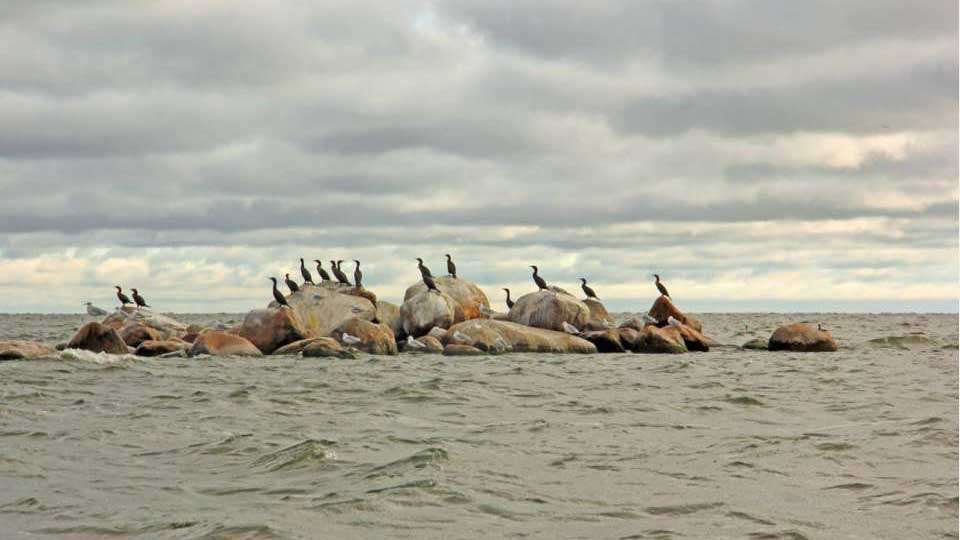
If you’re planning a New Year’s fishing trip, I can offer a key piece of advice for most reservoirs, especially the ones I fish in the Southwest: Bass like to get around rock this time of year. From my home waters of Lake Roosevelt, to Lake Mead, Lake Havasu and other reservoirs, bass are looking for that crawfish forage, so I would definitely be focusing on that rocky structure in January.
The depths I’d fish will vary, so I let the fish tell me where they want to be. We’ve had a pretty mild winter this year and last, so even though there’s a lot of deep bait, there’s still a lot of shallow bass. Because of this, I’ll expect the fish to be somewhere in the 5- to 25-foot range where I live.
I will point out that sunlight and wind will influence where the fish position. If the day warms up, you may see fish moving shallower, but the type of lake and water clarity can dictate a lot of this. Pay attention to where you’re getting bit and focus there.
As for baits, my go-to is a football jig. Year in and year out, it’s hard to beat because it mimics crawdads, and it’s a good way to fish rock.
In some areas of the country, like the Ozarks, you might want a smaller, lighter finesse size, like a 1/8-ounce jig head on spinning gear; while in the Southwest, we’ve found that fishing a 3/4-ounce on heavy baitcasters is good for making noise as it comes off the rocks.
I typically stick with natural colors like greens and browns to mimic crawfish. If you’re familiar with local crawfish coloration, match that. You can never go wrong with those natural colors. If the water is really off-colored, you might black/blue or black/red.
For my 3/4-ounce football head, I like a green pumpkin Big Bite Baits Double Tail Finesse Grub, but on a smaller size, sometimes I’ll go with a smaller craw trailer with less action.
Another bait that works well over that rocky bottom is a shaky head with a finesse worm. I’ll usually stick with the football head on windy days, but if we get a calm day, that shaky head can be a little more productive.
Depending on the slope of the bank, it’s usually a subtle drag with little hops. In any case, you want a slower presentation — just maintain contact with the bait as you map down the contour.
If you’re seeing fish on your electronics, but the slower techniques aren’t making them bite, you might do better with a reaction bait. A couple that I like are a jigging spoon and a small ice jig. You work both baits with a lot of action — a snap and fall type presentation that will often get their attention.
The right tackle is important here and for the heavier football head, I like a 7-foot, 7-inch heavy Phenix Feather rod with a 7:1 Ardent Grand reel carrying 15-pound Seaguar InvisX fluorocarbon.
I’ll fish the shaky head and my spoon on a 7-6 medium-heavy Phenix spinning rod with to a 20-pound Seaguar Smackdown braid tied to an 10-pound Seaguar InvisX fluorocarbon leader.
These winter fish are generally more lethargic, but if you take your time around rocky cover, you’ll find plenty of opportunity.





